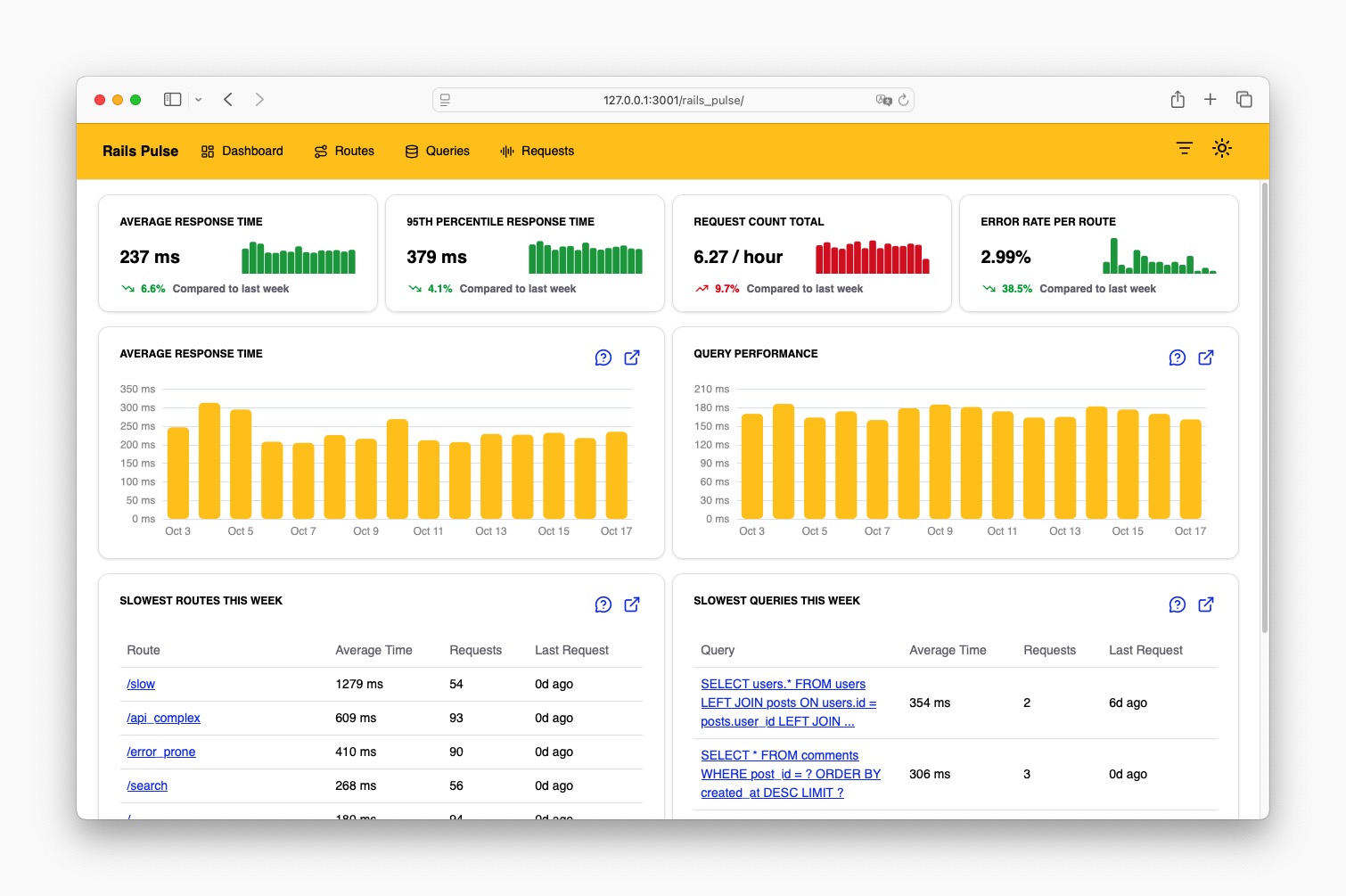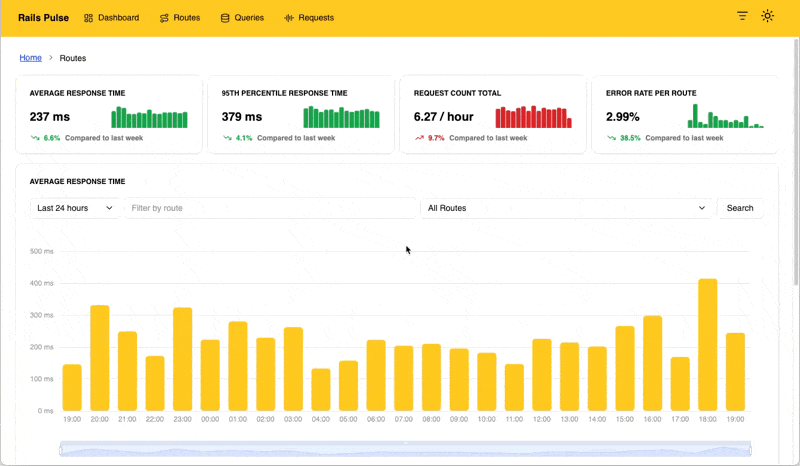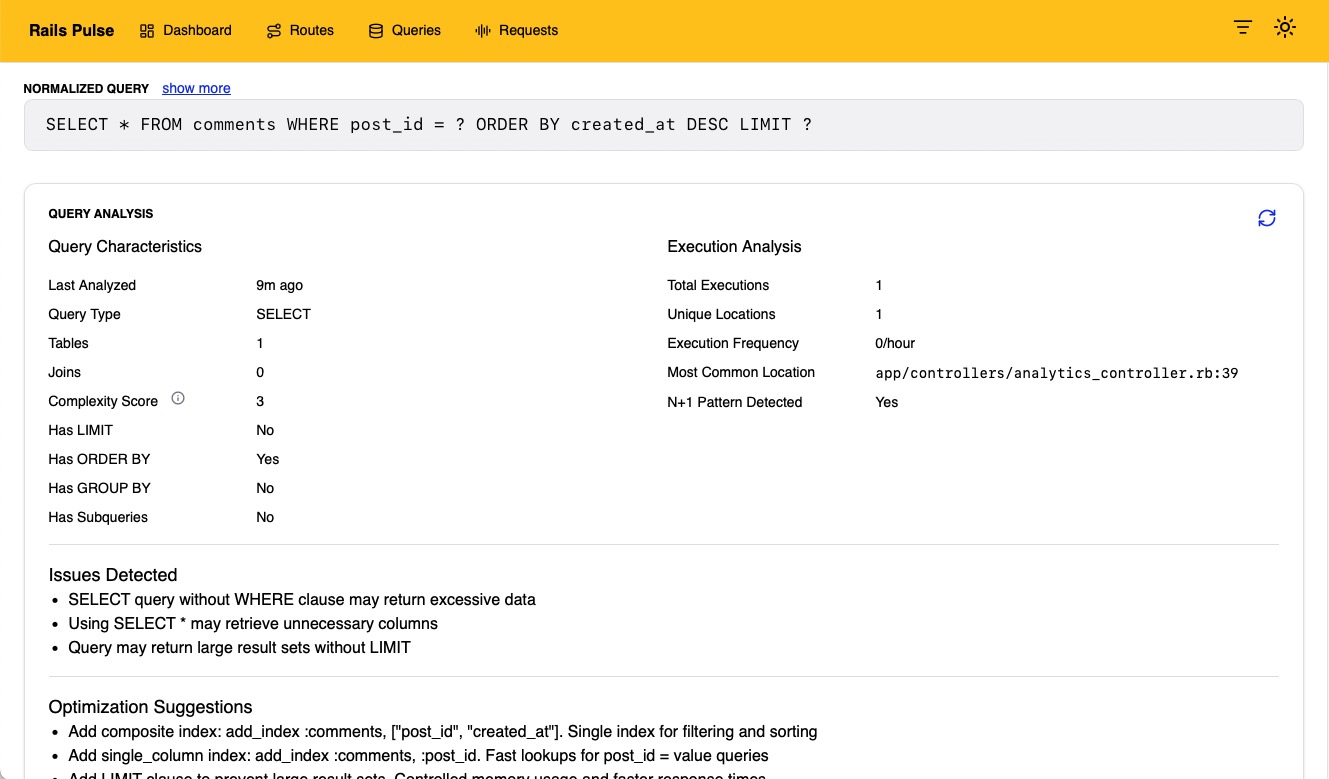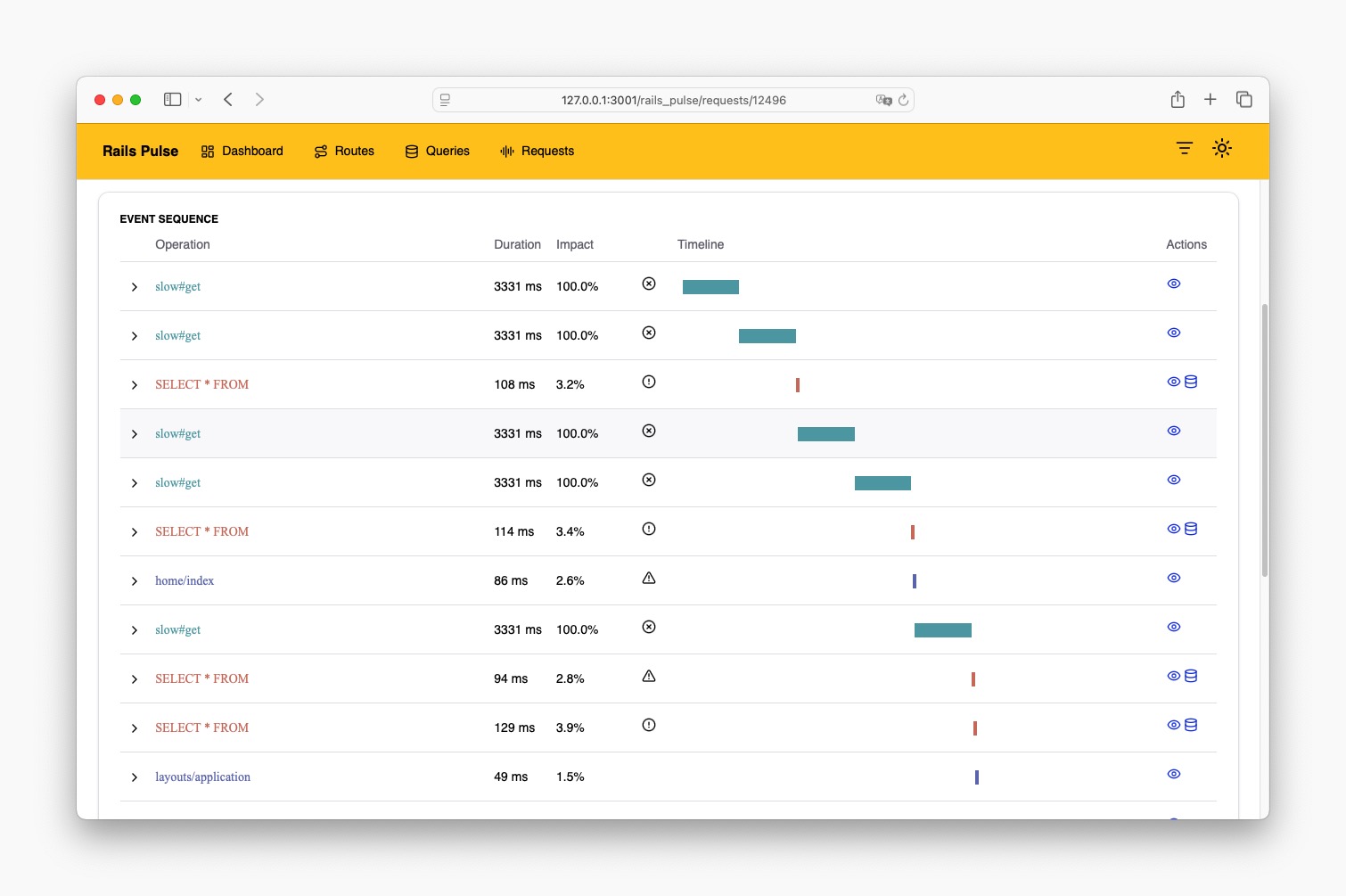Performance monitoring and debugging for Rails applications
Built as a Rails Engine, Rails Pulse seamlessly integrates with your existing application to capture, analyze, and visualize performance metrics without impacting your production workload.

Comprehensive Performance Monitoring
Rails Pulse provides deep insights into your Rails application's health with an interactive dashboard, SQL query tracking, and route-specific metrics—all without complex configuration.
Interactive Dashboard
Monitor your application with response time charts, request analytics, and week-over-week trend analysis. Beautiful responsive interface with dark/light mode support gives you actionable insights at a glance.

SQL Query Performance
Track SQL query performance with slow query identification and configurable thresholds. Quickly identify database bottlenecks and optimize your most expensive queries.

Route-Specific Metrics
Get granular insights with route-specific metrics and configurable performance thresholds. See exactly which endpoints need optimization.

Zero Configuration
Start collecting performance data immediately after installation with sensible defaults. No complex setup required.
Multiple Databases
Full support for SQLite, PostgreSQL, and MySQL. Store monitoring data in your main database or use a separate dedicated database for complete isolation.
Smart Data Cleanup
Automatic data archiving prevents database bloat while preserving essential insights. Configure time-based and count-based retention policies.
Built for Developers
Rails Pulse is designed with developer experience in mind. Everything you need to monitor, debug, and optimize your Rails application.
Quick Installation
Add Rails Pulse to your application in minutes. Simply add the gem, run the installer, and you're ready to start monitoring.

Get Started in Minutes
Add Rails Pulse to your Gemfile, run the installer, and mount the engine. That's it! Start monitoring your application's performance immediately with zero configuration.
# Gemfile
gem 'rails_pulse'
# Install
$ bundle install
$ rails generate rails_pulse:install
$ rails db:migrate
# config/routes.rb
Rails.application.routes.draw do
mount RailsPulse::Engine => "/rails_pulse"
endFrequently Asked Questions
Everything you need to know about Rails Pulse
What Rails versions are supported?
Rails Pulse supports Rails 7.2+ and Ruby 3.3+. It's built as a Rails Engine and follows Rails best practices, ensuring compatibility with the latest Rails versions.
Does Rails Pulse impact my application's performance?
Rails Pulse is designed with minimal performance overhead in mind. It uses smart caching, efficient instrumentation, and Rails' built-in ActiveSupport::Notifications to collect metrics without slowing down your application. You can enable or disable it per environment.
Can I use a separate database for Rails Pulse?
Yes! Rails Pulse supports two database configurations:
- Single Database (default) - Stores data in your main application database. Simple setup with zero additional configuration.
- Separate Database - Use a dedicated database for complete isolation. Supports SQLite, PostgreSQL, and MySQL. Perfect for scaling monitoring independently or using different database engines.
Install with --database=separate flag to use a separate database.
How do I secure the Rails Pulse dashboard?
Rails Pulse includes flexible authentication support. You can configure authentication in the initializer to work with Devise, custom authentication systems, or any authentication method. Simply define your authentication logic in the configuration.
How does data cleanup work?
Rails Pulse offers automatic data archiving with two strategies:
- Time-based cleanup - Automatically delete records older than a configured period (default: 2 weeks)
- Count-based cleanup - Enforce maximum record limits per table to prevent excessive storage use
Schedule the RailsPulse::CleanupJob to run daily, or run cleanup manually with rails rails_pulse:cleanup.
Is Rails Pulse free?
Yes! Rails Pulse is completely free and open source under the MIT License. No subscription fees, no usage limits, and no external dependencies. All performance data stays in your database.
How is Rails Pulse different from APM services?
Rails Pulse offers several advantages:
- No external dependencies - Everything runs in your Rails application
- Zero monthly costs - No subscription fees or usage-based pricing
- Data privacy - All metrics stay in your database
- Full customization - Complete control over thresholds and interface
- Rails-native - Built specifically for Rails with deep framework integration
Perfect for development, staging, and cost-conscious production monitoring.